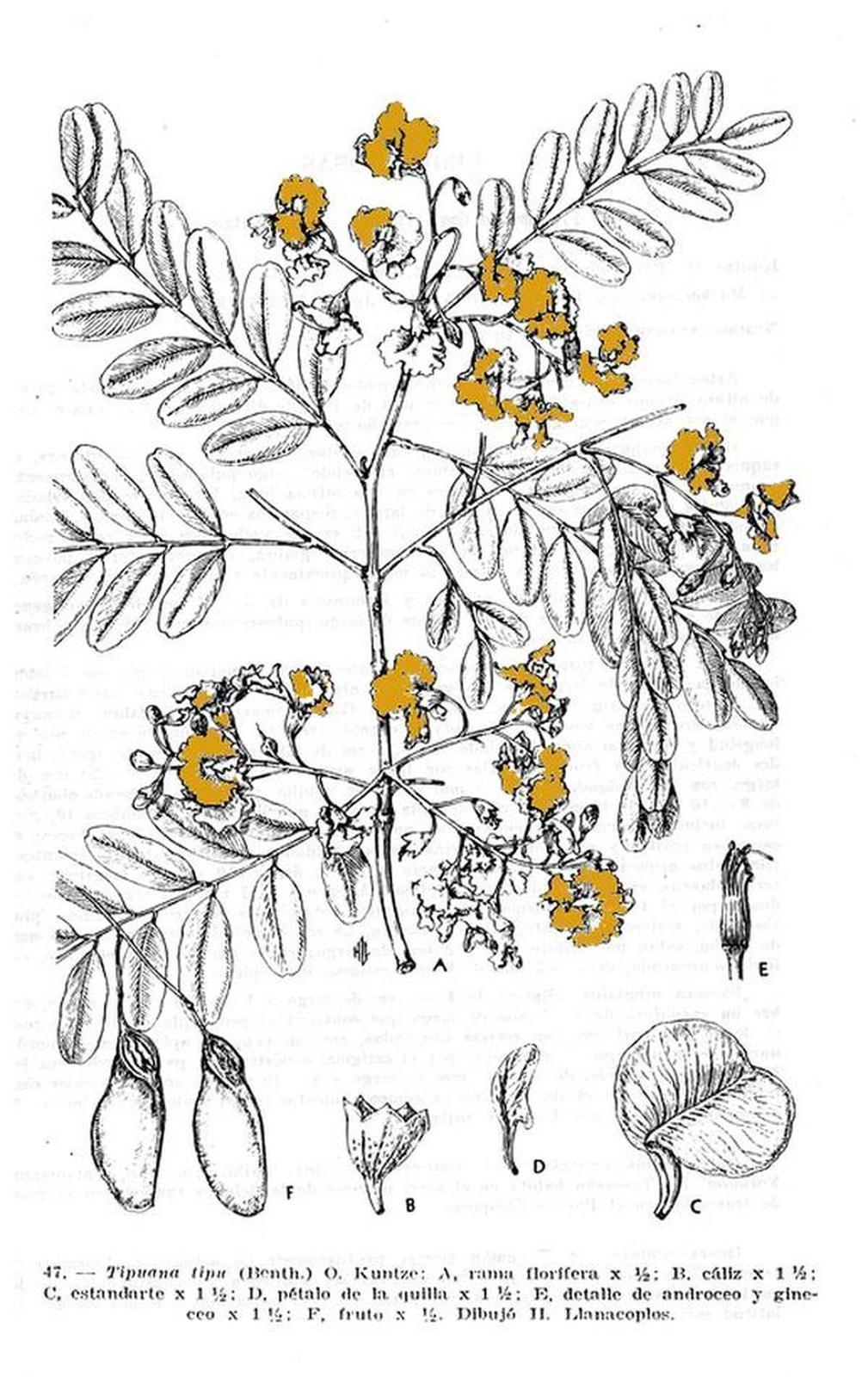Tipuana tipu (Benth.) Kuntze
FabaceaeEl nombre científico de este árbol proviene de tipú, denominación que recibe en su nativo Brasil. Se emplea hoy en día como árbol de sombra en avenidas y parques de muchas ciudades, en gran parte, gracias a la labor de aclimatación llevada a cabo por el arquitecto y paisajista Carlos Thays (1849-1934). Parisino afincado en Argentina, donde realizó la mayor parte de su obra, Thays fue un paisajista de espíritu científico, estudioso de la flora autóctona sudamericana, que gustaba de experimentar con las plantas: no obstante sus trabajos con la yerba mate fueron fundamentales para la industrialización del cultivo de esta planta de la que se obtiene una de las bebidas más populares del Cono Sur. Fue uno de los principales impulsores, además del Parque Nacional de Iguazú, famoso por sus espectaculares cataratas, del Jardín Botánico de Buenos Aires, donde consiguió aclimatar muchas de las especies que había estudiado y fotografiado en sus excursiones a la selva, tales como el palo rosa, árbol al que consideró magnífico, útil e ideal para ciudades no muy frías. Así, Thays es precursor de paisajistas, como el brasileño Roberto Burle Marx, preocupados por “domesticar” especies de la flora local para después incorporarlas en sus diseños de parques urbanos. Una vez utilizados con éxito en Argentina y América, árboles como el palo rosa serían destinados a decorar y a enriquecer la paleta botánica de ciudades europeas de similares condiciones climáticas como es el caso de Sevilla, especialmente a partir de 1929 por motivo de la Exposición Iberoamericana.
Procedencia
AmericanoCalendario
Hábitat
Morfología
 Árbol
Árbol
 Irregular
Irregular
 Pinnada
Pinnada
 Elíptica
Elíptica
 Oblonga
Oblonga
 Opuesta
Opuesta
 Entero
Entero
 Obtusa
Obtusa
 Emarginado
Emarginado
 Obtuso
Obtuso
 Caduco
Caduco
